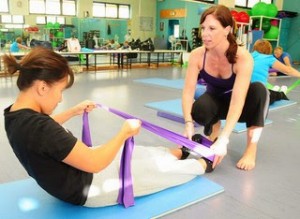![[www.stockpholio.com]-4618335923_3 Tate Modern Tribute](https://fromdiaperstodiamonds.com/wp-content/uploads/2014/06/www.stockpholio.com-4618335923_3-Tate-Modern-Tribute.jpg)
Something happened tonight that hasn’t happened in seven years.
“Surprise,” I chime in alongside friends gathered to celebrate our friend’s 65th birthday.
I choose a tan wicker rocking chair on the back patio where I engage in conversations. I catch up with some friends and reconnect with another I haven’t seen in years. The carrot cake is delicious. I savor every bite. I’m comfortable updating friends about my life, my adult daughters, and of course, our three precious grandchildren.
But what I don’t do is the significant part. I don’t sit quiet as a mouse observing so I can conserve my energy. I don’t leave the group because it’s too noisy to find solitude in a peaceful location. I don’t excuse myself to clean up my usual spilt drink because I don’t spill my Diet Coke.
I don’t startle and jump because someone drops a fork on the tile. I don’t roam around searching for the family cat since petting kitty provides a legitimate distraction. I don’t hide behind my camera when I can’t understand the conversation.
I don’t wander off to “help” since I can’t construct a coherent thought or form a complete sentence. I don’t walk to my car to dig up something I “forgot” when I can’t track the cross-talk of multiple conversations. I don’t go through the motions because I’m disconnected, staring off with a blank expression.
Tonight, I do none of these things. The things I’ve managed to do for seven years to compensate for my brain impairment in social settings. Indeed, something happened tonight. I initiated conversations. I added to stories. I asked questions. I laughed. I enjoyed myself fully…I didn’t escape.
Image Source: 5Bwww.stockpholio.com-5D-4618335923_3-Tate-Modern-Tribute.jpg


 an ambulance or the police? Did the Turlock Unified District follow established protocol?
an ambulance or the police? Did the Turlock Unified District follow established protocol?![[www.stockpholio.com]-7574858320_4 on its way out aussiegall](https://fromdiaperstodiamonds.com/wp-content/uploads/2014/04/www.stockpholio.com-7574858320_4-on-its-way-out-aussiegall-211x300.jpg)


 negative peer pressure, it is essential to remember that peer pressure isn’t always negative. Positive peer pressure assists school age children with reinforcing skills.
negative peer pressure, it is essential to remember that peer pressure isn’t always negative. Positive peer pressure assists school age children with reinforcing skills. become aware of “virtual” peer pressure and intervene early. A few months ago when I prepared this material for a group of school age parents in Ceres, California, I became distraught about the potential negative consequences of technology.
become aware of “virtual” peer pressure and intervene early. A few months ago when I prepared this material for a group of school age parents in Ceres, California, I became distraught about the potential negative consequences of technology.